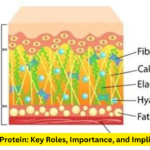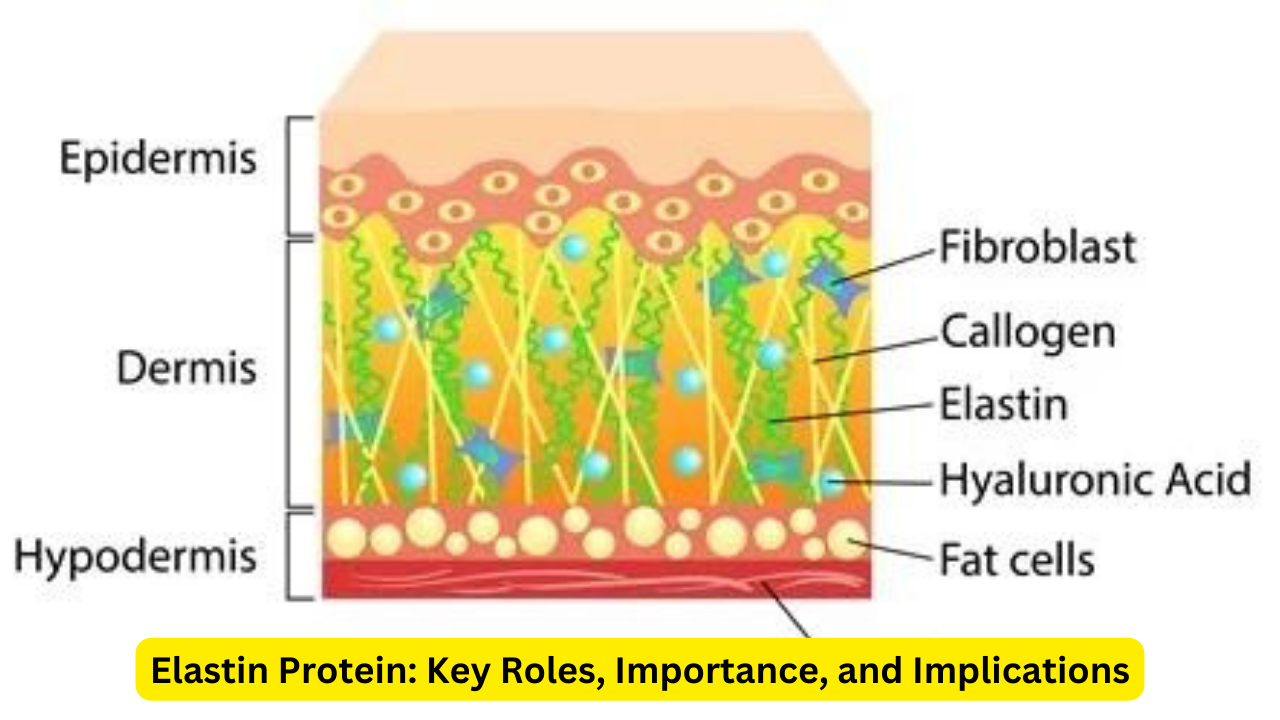Elastin protein, a crucial component of the extracellular matrix, plays a pivotal role in maintaining tissue elasticity and resilience in various organs of the human body. This fibrous protein is particularly abundant in tissues that require flexibility, such as the skin, lungs, arteries, and ligaments. Understanding the structure, function, and regulation of elastin is essential for comprehending its significance in physiological processes and medical implications.
Structure and Function of Elastin protein
Structure of Elastin
Elastin is primarily composed of amino acids such as glycine, alanine, valine, and proline, arranged in a unique sequence that forms cross-linked chains. These chains create a flexible and durable network within the extracellular matrix, allowing tissues to recoil after stretching.
Functionality in Tissues
The primary function of elastin is to impart elasticity to tissues, enabling them to stretch and recoil without deformation. This property is critical in organs like the lungs, where elastin fibers facilitate breathing by allowing alveoli to expand during inhalation and contract during exhalation. In blood vessels, elastin ensures arterial walls maintain structural integrity under varying blood pressures.
Biosynthesis and Regulation of Elastin
Biosynthesis Process
Elastin biosynthesis begins with the transcription of the elastin gene into mRNA, which is translated into a precursor protein called tropoelastin. Post-translational modifications and assembly into mature elastin fibers occur in specialized cells like fibroblasts and smooth muscle cells.
Regulatory Mechanisms
Several factors influence elastin production and maintenance, including genetic predispositions, environmental stimuli, and hormonal regulation. Growth factors like TGF-β and mechanical forces exert significant control over elastin synthesis, ensuring tissues adapt to physiological demands.
Importance of Elastin in Health and Disease
Healthy Tissue Maintenance
Maintaining adequate elastin levels is crucial for preserving tissue integrity and function throughout life. In skin, elastin promotes youthful elasticity and resilience, preventing sagging and wrinkles associated with aging. Similarly, in arterial walls, elastin fibers contribute to cardiovascular health by supporting blood flow regulation and preventing vessel stiffening.
Implications in Pathological Conditions
Dysregulation of elastin synthesis or degradation is implicated in various diseases. For instance, deficiencies in elastin production can lead to conditions like cutis laxa, characterized by loose and wrinkled skin. Conversely, excessive elastin degradation contributes to conditions such as atherosclerosis, where arterial stiffness increases the risk of cardiovascular events.
Research Advances and Future Directions
Recent studies have advanced our understanding of elastin biology, revealing novel therapeutic targets and diagnostic markers for elastin-related disorders. Techniques such as gene editing and tissue engineering hold promise for enhancing elastin production or repairing damaged elastin networks in clinical settings.
Clinical Applications and Therapeutic Interventions
Medical Applications
In clinical practice, understanding elastin’s role enables targeted interventions for diseases involving elastin deficiency or dysfunction. Therapies aiming to enhance elastin synthesis or prevent its degradation hold promise for treating conditions like pulmonary emphysema and vascular disorders.
Therapeutic Strategies
Emerging therapeutic strategies focus on modulating elastin metabolism through pharmaceutical agents or biotechnological approaches. Small molecule inhibitors targeting elastase, the enzyme responsible for elastin degradation, are under investigation for their potential to preserve tissue elasticity and function.
Future Directions and Innovations
Advancements in Research
Ongoing research aims to elucidate intricate aspects of elastin biology, including its interaction with other extracellular matrix components and signaling pathways. Insights gained from these studies could lead to the development of novel therapies for age-related degenerative conditions and genetic disorders affecting elastin production.
Biomedical Engineering
In the realm of biomedical engineering, efforts are directed towards creating biomimetic scaffolds that mimic the native elastin structure. These scaffolds hold promise for regenerative medicine applications, facilitating the repair and regeneration of elastin-rich tissues damaged by injury or disease.
Conclusion
Elastin protein is a fundamental component of the extracellular matrix, essential for maintaining tissue elasticity and resilience across various organs. Understanding its structural complexity, regulatory mechanisms, and implications in health and disease underscores its significance in biomedical research and clinical practice.










